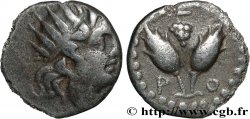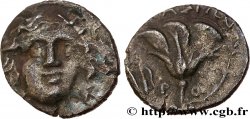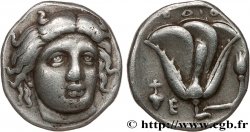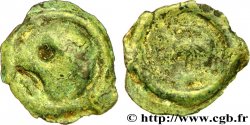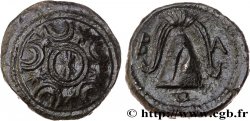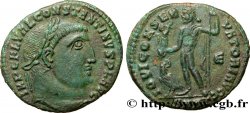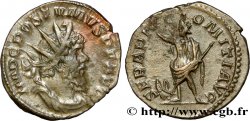E-auction 504-414710 - bgr_779424 - KARIEN - KARISCHE INSELN - RHODOS Drachme
Sie müssen angeschlossen sein und von cgb.fr genehmigt werden, um in einer E-Auktion teilzunehmen.Melden Sie sich an, um zu wetten..Die Kontobestätigungen sind innerhalb von 48 Stunden nach Ihrer Anmeldung gemacht.Warten Sie nicht bis die letzten zwei Tage vor dem Abschluss eines Verkaufs, um Ihre Registrierung abzuschließen. Klickend "BIETEN" verpflichten Sie sich vertraglich, diesen Artikel zu kaufen und Sie nehmen ohne Reserve die allgemeinen Verkaufsbedingungen für den e-auctions zu cgb.fr an.
Der Verkauf wird an der Zeit auf der Übersichtsseite angezeigt geschlossen werden. Angebote, die nach der Schließung Zeit empfangen sind, werden nicht gültig.
Bitte beachten Sie, dass die Fristen für die Einreichung Ihres Angebots auf unsere Server können variieren und es kann zur Ablehnung Ihres Angebots entstehen, wenn es in den letzten Sekunden des Verkaufs gesendet wird. Die Angebote sollen mit ganzer Zahl ausgeführt sein, Sie können Kommas oder des Punktes in Ihrem Angebot nicht erfassen. Bei Fragen klicken Sie hier, um einen Blick auf die FAQ E-Auktionen.
KEINE ANSCHAFFUNGSKOSTEN FÜR DIE KÄUFER.
KEINE ANSCHAFFUNGSKOSTEN FÜR DIE KÄUFER.
| Schätzung : | 150 € |
| Preis : | 76 € |
| Höchstgebot : | 79 € |
| Verkaufsende : | 12 Dezember 2022 14:04:30 |
| Bieter : | 10 Bieter |
Type : Drachme
Datum: c. 205-189 ou 175/170 AC.
Name der Münzstätte / Stadt : Rhodes
Metall : Silber
Durchmesser : 14,5 mm
Stempelstellung : 12 h.
Gewicht : 2,51 g.
Seltenheitsgrad : R2
Kommentare zum Erhaltungszustand:
Flan court, centré. Joli revers, bien venu à la frappe. Patine gris foncé
Vorderseite
Titulatur der Vorderseite ANÉPIGRAPHE.
Beschreibung Vorderseite Tête d'Hélios (Apollon) de face à droite, les cheveux tombant.
Rückseite
Beschreibung Rückseite Rose sur sa tige avec un bouton à droite ; dans le champ à gauche, un arc et une massue entrecroisés.
Legende des Reverses : R-O/ STASIWN
Übersetzung der Rückseite (de Rhodes/ Stasion).
Kommentare
L’arc et le carquois sont associés à Stasion qui ne sont représentés que sur des drachmes. Mais le magistrat est aussi associé à un foudre ailé (Ashton 298). R. Ashton nous indique pour ce monétaire : “Die-linking is particularly close among the drachm issues of Gorgos, Peisikrates, Ainetor, Aristakos and Stasion”. Nous retrouvons ce même nom sur des tétradrachmes rhodiens ornés d’une rose au type d’Alexandre III le Grand, datés vers 201-190 avant J.-C. (ECK. 596 = MP. 2517 et coll. E. Karl 526), mais aussi sur des drachmes plinthophores datées entre 188 et 170 avant J.-C. (ECK. 625 = coll. E. Karl 550 avec une étoile dans le champ). Enfin R. Ashton avait mis en lumière des monnaies pseudo-rhodiennes frappées en Grèce Centrale ou du Nord vers 175-170 avant J.-C. (R. H. J. Ashton, NC. 1988, p. 31, n° 34 = ECK. 800 et 801) qui pourrait correspondre tout à fait à notre type monétaire. Ces drachmes auraient été fabriquées afin de stipendier les mercenaires rhodiens qui étaient dans les armées grecques avant la bataille de Pydna.
The bow and quiver are associated with Stasion which are only depicted on drachmas. But the magistrate is also associated with a winged thunderbolt (Ashton 298). R. Ashton tells us for this monetary: “Die-linking is particularly close among the drachm issues of Gorgos, Peisikrates, Ainetor, Aristakos and Stasion”. We find this same name on Rhodian tetradrachms decorated with a rose of the type of Alexander III the Great, dated around 201-190 BC (ECK. 596 = MP. 2517 et coll. E. Karl 526) , but also on plinthophore drachmas dated between 188 and 170 BC (ECK. 625 = coll. E. Karl 550 with a star in the field). Finally R. Ashton had highlighted pseudo-Rhodian coins minted in Central or Northern Greece around 175-170 BC (RHJ Ashton, NC. 1988, p. 31, n° 34 = ECK. 800 and 801) which could correspond entirely to our monetary type. These drachmas would have been made to pay for the Rhodian mercenaries who were in the Greek armies before the battle of Pydna
The bow and quiver are associated with Stasion which are only depicted on drachmas. But the magistrate is also associated with a winged thunderbolt (Ashton 298). R. Ashton tells us for this monetary: “Die-linking is particularly close among the drachm issues of Gorgos, Peisikrates, Ainetor, Aristakos and Stasion”. We find this same name on Rhodian tetradrachms decorated with a rose of the type of Alexander III the Great, dated around 201-190 BC (ECK. 596 = MP. 2517 et coll. E. Karl 526) , but also on plinthophore drachmas dated between 188 and 170 BC (ECK. 625 = coll. E. Karl 550 with a star in the field). Finally R. Ashton had highlighted pseudo-Rhodian coins minted in Central or Northern Greece around 175-170 BC (RHJ Ashton, NC. 1988, p. 31, n° 34 = ECK. 800 and 801) which could correspond entirely to our monetary type. These drachmas would have been made to pay for the Rhodian mercenaries who were in the Greek armies before the battle of Pydna







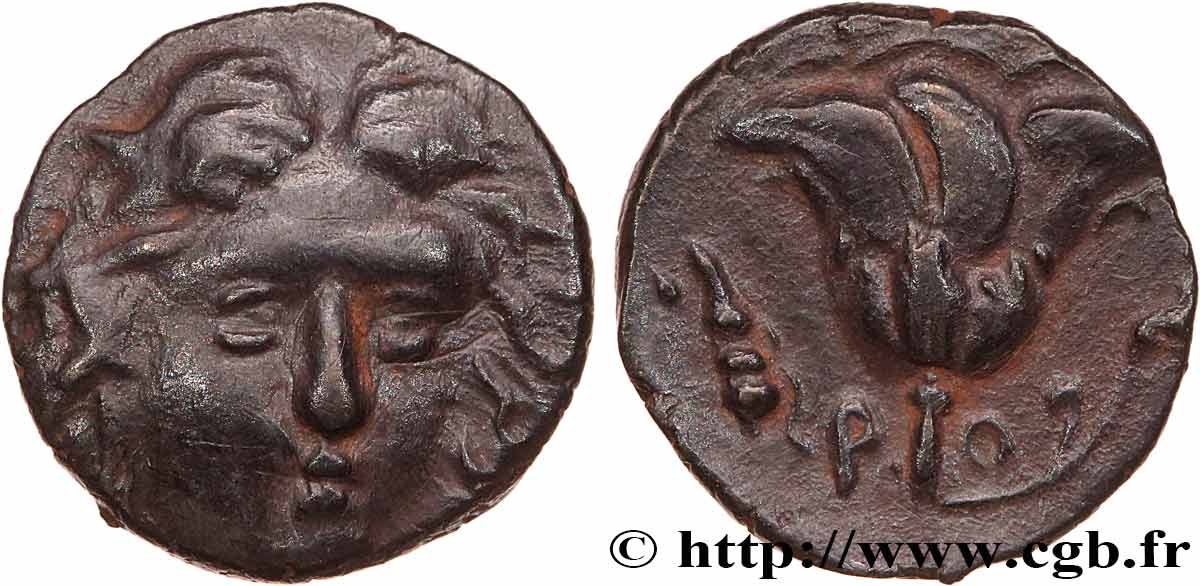
 Berichten über einen Fehler
Berichten über einen Fehler Die Seite drucken
Die Seite drucken Teilen meiner Auswahl
Teilen meiner Auswahl Stellen Sie eine Frage
Stellen Sie eine Frage Einlieferung/Verkauf
Einlieferung/Verkauf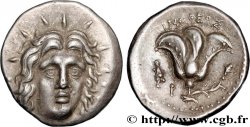
 Details
Details